Recapping Greenbuild 2019
 Daniela Grungnale | Dec 4, 2019
Daniela Grungnale | Dec 4, 2019
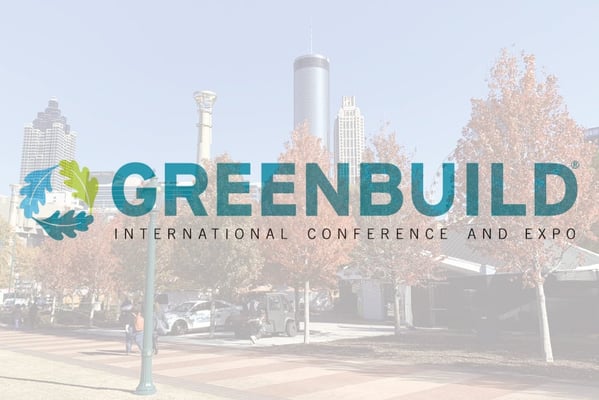
What does it mean for a company to be greener? How can making small changes affect the greater good? Recently, I attended the Greenbuild International Conference and Expo in Atlanta, Georgia on behalf of Falcon Structures, where many of my questions about sustainable business practices were answered. This conference changed my perspective on waste and how easy it is to change our ways while alerting me to the fact that modular construction is the way of the future. It kicked off with a keynote “Conversation with President Barack Obama,” who discussed the importance of listening to others, the impact of storytelling, and the benefits of having a diverse team. Every informative session I attended discussed the importance of green building and the future of sustainable construction and manufacturing. Now that I’m back in Austin, Texas, reflecting on what I’ve learned, I want to share these ideas with Falcon’s community. Let’s jump right in!
“A Conversation with President Barack Obama”
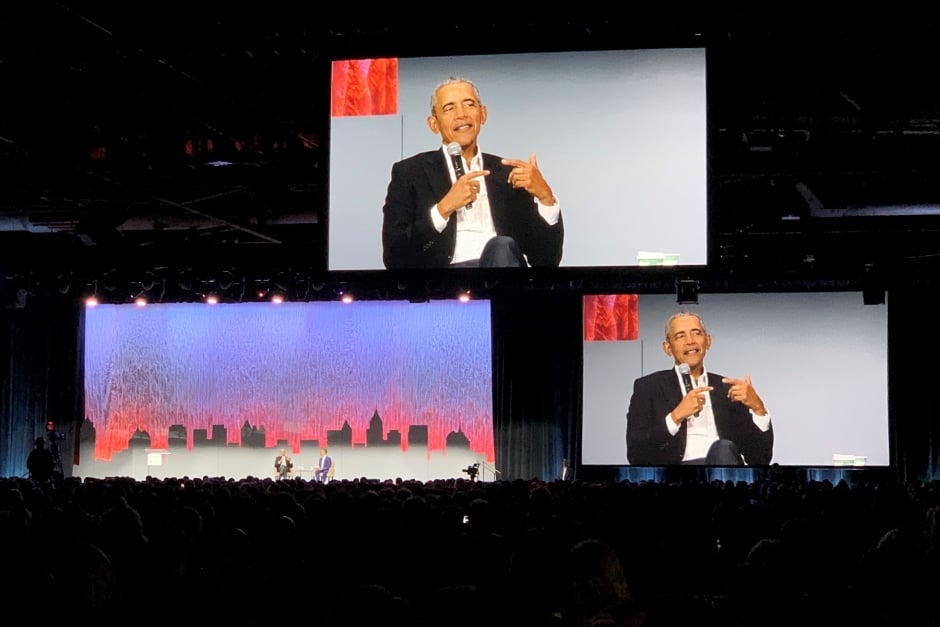
The best way to understand those around you is to listen. Listening helps you understand what others value and prioritize. This is one of the major ideas former President Barack Obama stressed in his keynote discussion. By telling his own stories, he emphasized how stories make a bigger impact on people than listing statistics and facts. He also stressed the importance of having a diverse team with people from all different backgrounds, bringing a different perspective to the table. He went on to emphasize that more organizations should look to juniors on their teams who often have great ideas that may be different from those in senior positions but still just as valuable. The ideas President Obama shared on the Greenbuild stage carried out through the rest of the expo and conference as the attendees worked to deepen their understanding of green building.
“Technology, Lean, and the Future of Sustainable Job Sites”
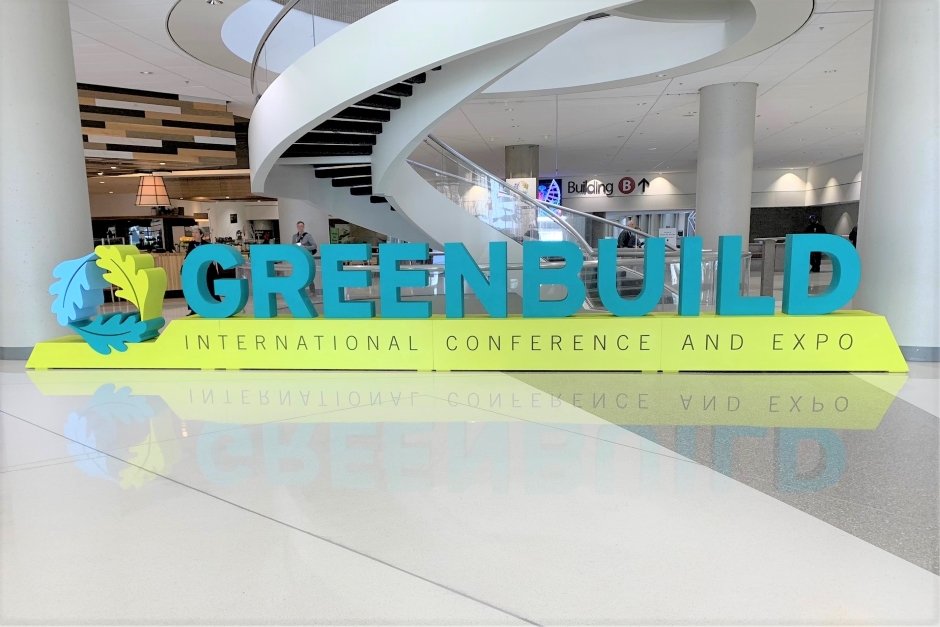
Modular construction is growing in popularity but also in importance, specifically because it correlates with sustainable job sites. The main takeaway from this session was that modular construction has a positive impact on our environment and other industries and is going to grow substantially in popularity. Modular construction is the way of the future, creating a more innovative option for owners while reducing waste on-site and logistics. By modularizing construction, we are modularizing design. That is spending less time designing smaller pieces and more time creating grand ideas. Think about different buildings -- if you were to strip away the front of the building, could you tell them apart? By creating modular buildings, architects and designers can spend more time designing and creating. For contractors, modularized construction alleviates the headache of finding skilled tradesmen. With the skilled trade workforce at an all-time low and those in the field preferring a more controlled work environment such as a modular construction facility, it lessens the need for skilled trade workers on-site. Clients’ needs are always changing, they are looking for better ways and better products. Modular construction inspires others to think outside traditional building practices and provides a more innovative option while reducing waste and creating better collaboration across different industries.
“Zero Waste in Construction”
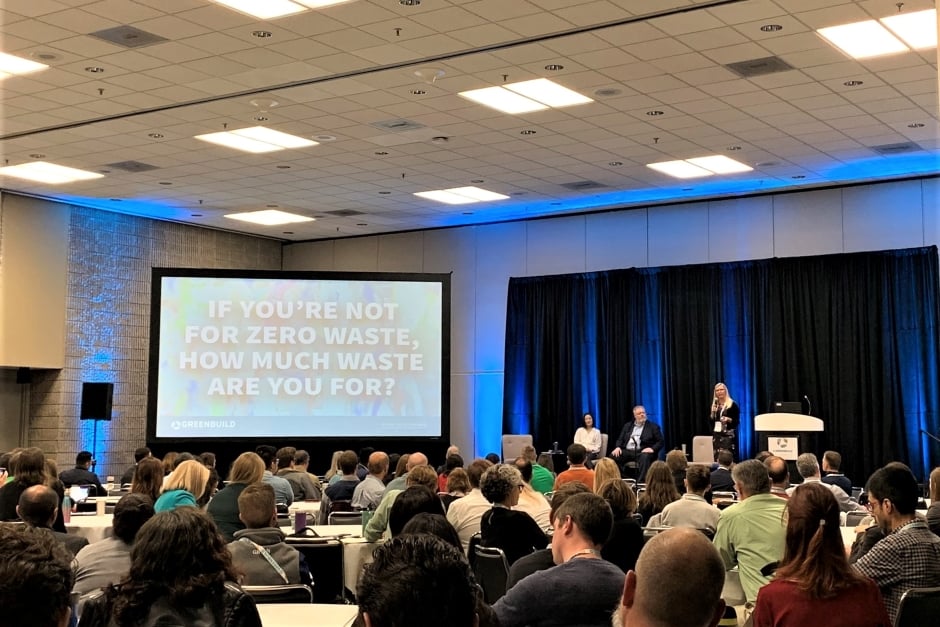
Ever wonder why waste is a big discussion in construction? In 1 year, construction waste amounted to 548,000,000 tons. Zero waste in construction can be viewed as resourceful construction. It rethinks how the industry designs, packages, and manages products. It requires educating and re-educating employees on what it means to be less wasteful. There are simple ways companies can incorporate zero waste practices. For example, when you receive a product, consider returning the packaging to the company so they can reuse it. Instead of throwing away what’s left of lunch, separate recyclables from compost. Make a sustainable workplace more convenient for employees by keeping waste, compost, and recycling close by. Thinking beyond recycling alone, we are redesigning, rethinking, reducing, and reusing – but most importantly – we are making a difference.
“Using Design and Construction to Create an Equitable World”
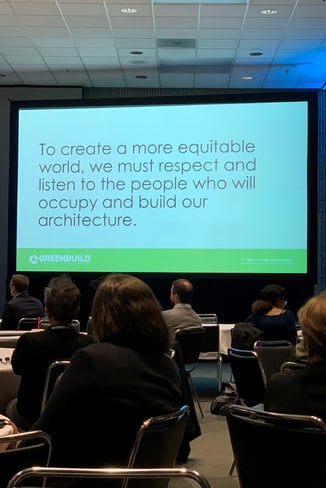 “To create a more equitable world, we must respect and listen to the people who will occupy and build our architecture,” said Alissa Kingsley, Project Architect at Lord Aeck Sargent. An important part of construction design is to ensure that the surrounding environment can enjoy the structure. Before this session, I never thought about how a building could affect the surrounding area in such simple ways, such as by the way natural light shines through windows, how it can affect the commute for pedestrians, and how a building can change the aesthetics of a neighborhood. During this session, I learned how important it is to be sure we create a more equitable world. I recalled Obama’s keynote discussion where he emphasized the importance of listening to people and hearing their stories to create a more equitable world. An example he provided was of a fountain he frequented during his childhood. That fountain he once enjoyed is now covered by a building, affecting how residents access freshwater. This story highlighted the importance of understanding those around us and taking their livelihoods into consideration.
“To create a more equitable world, we must respect and listen to the people who will occupy and build our architecture,” said Alissa Kingsley, Project Architect at Lord Aeck Sargent. An important part of construction design is to ensure that the surrounding environment can enjoy the structure. Before this session, I never thought about how a building could affect the surrounding area in such simple ways, such as by the way natural light shines through windows, how it can affect the commute for pedestrians, and how a building can change the aesthetics of a neighborhood. During this session, I learned how important it is to be sure we create a more equitable world. I recalled Obama’s keynote discussion where he emphasized the importance of listening to people and hearing their stories to create a more equitable world. An example he provided was of a fountain he frequented during his childhood. That fountain he once enjoyed is now covered by a building, affecting how residents access freshwater. This story highlighted the importance of understanding those around us and taking their livelihoods into consideration.
Alissa Kingsley explained her own tactic to engage directly with those impacted by new construction using augmented reality. She showed community members who frequented the location an augmented rendering of the completed construction site and what it would look like once the building was completed. This way community members could get the look and feel of the space to voice their concerns before construction began. By doing this, the architect was able to understand the environment around the site and make appropriate changes to the design. Kingsley was able to save the new building owner money by addressing issues before the construction phase began.
 As a Falcon Structures team, we loved getting to engage with other visitors at Greenbuild and make connections. We now feel more knowledgeable about how we, as a company, can make sustainable choices and how repurposing shipping containers is on track with the green building practices. Learn more about how shipping containers are a sustainable building choice by reading our free eBook here.
As a Falcon Structures team, we loved getting to engage with other visitors at Greenbuild and make connections. We now feel more knowledgeable about how we, as a company, can make sustainable choices and how repurposing shipping containers is on track with the green building practices. Learn more about how shipping containers are a sustainable building choice by reading our free eBook here.
SUBSCRIBE
- Shipping Container Modifications
- How-Tos
- Workspace
- Commercial Construction
- Multi-Container Buildings
- Storage Solutions
- Industrial Enclosures
- Bathrooms & Locker Rooms
- Oil & Gas
- Climate Control
- Green Building
- Living Space
- Industry Insight
- Military & Training Facilities
- Water Treatment Solutions
- Energy
THINK INSIDE THE BOX®
WITH OUR BLOG
Get everything from shipping container basics, to detailed how-tos and industry news in our weekly blog. Stay inspired and subscribe!
RELATED BLOGS
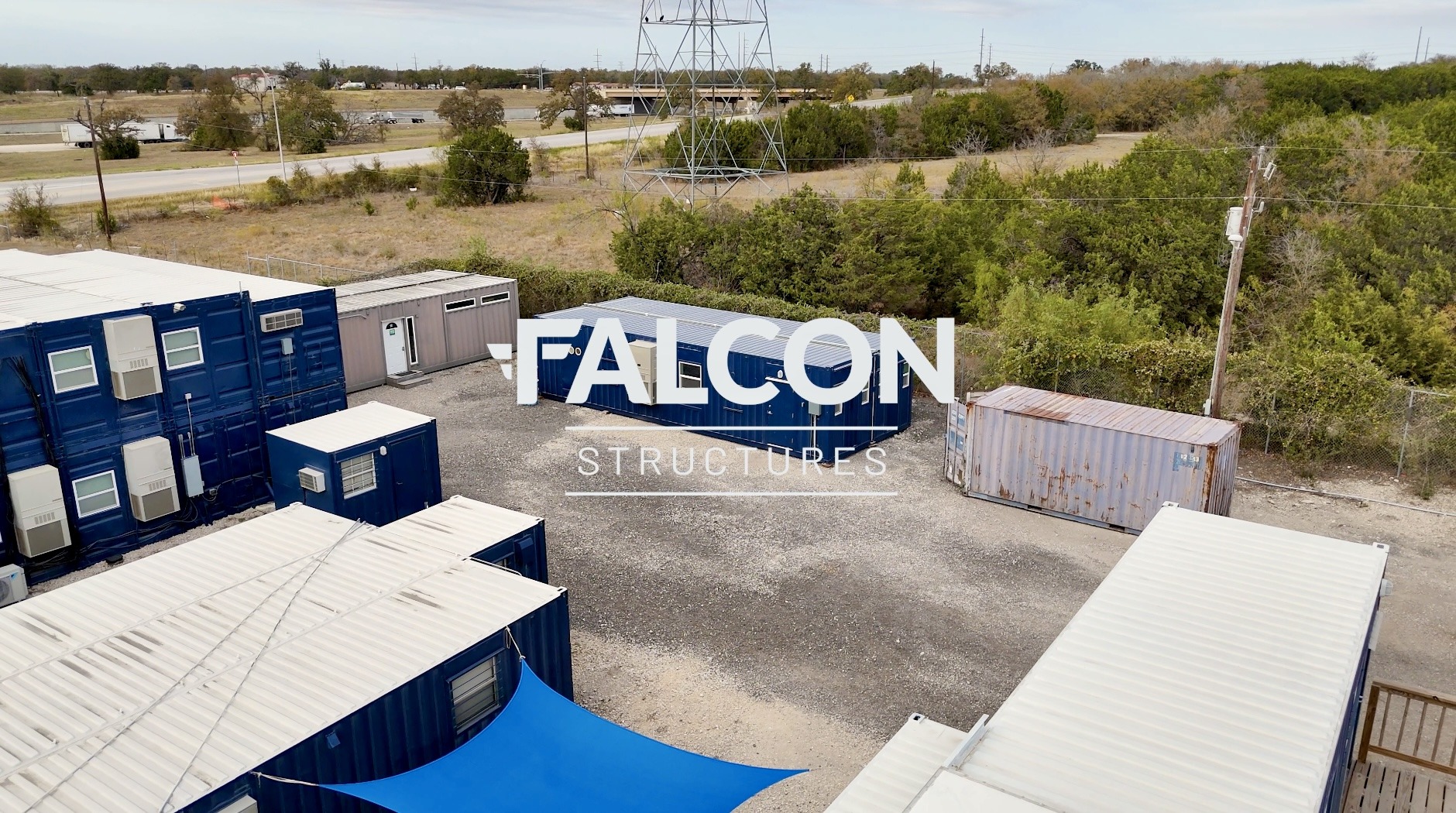
Building Better Workplaces: Behind Falcon's New Container Breakroom
Becca Hubert | Feb 5, 2025 | 4 min read
READ MORE
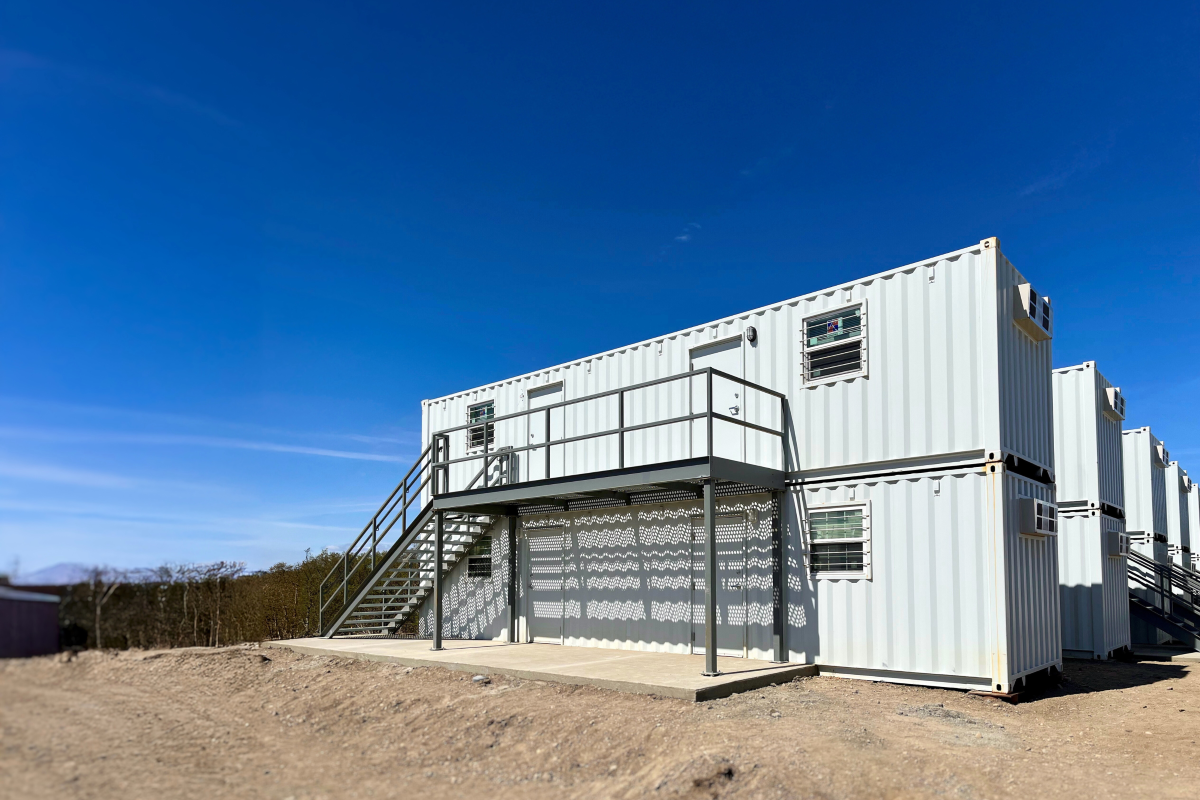
Blueprint for Better Workforce Housing: Shipping Container Benefits
Becca Hubert | Nov 13, 2024 | 4 min read
READ MORE
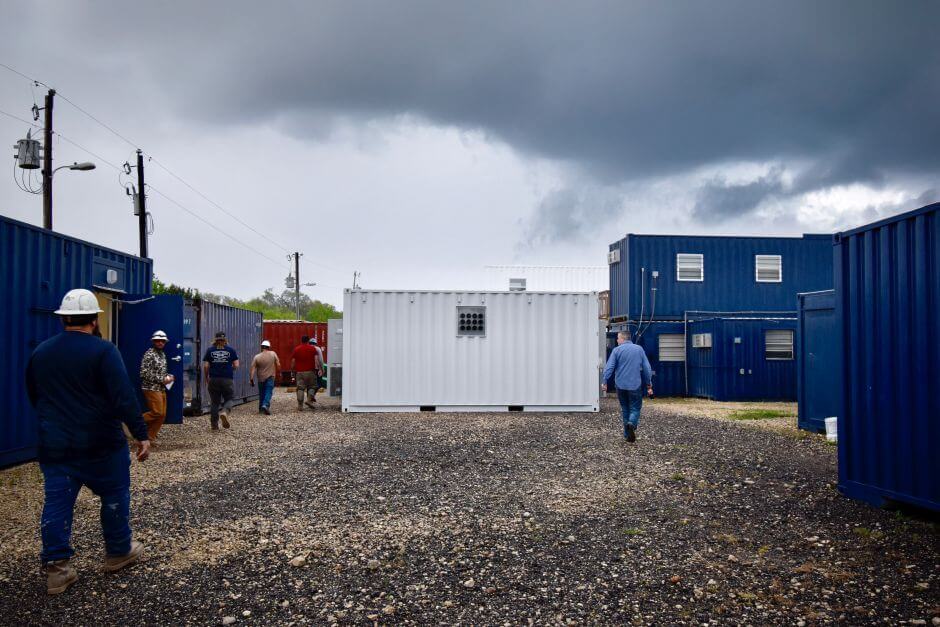
Protecting Field Workers with Climate-Resilient Container Structures
Becca Hubert | Jun 4, 2025 | 4 min read
READ MORE
